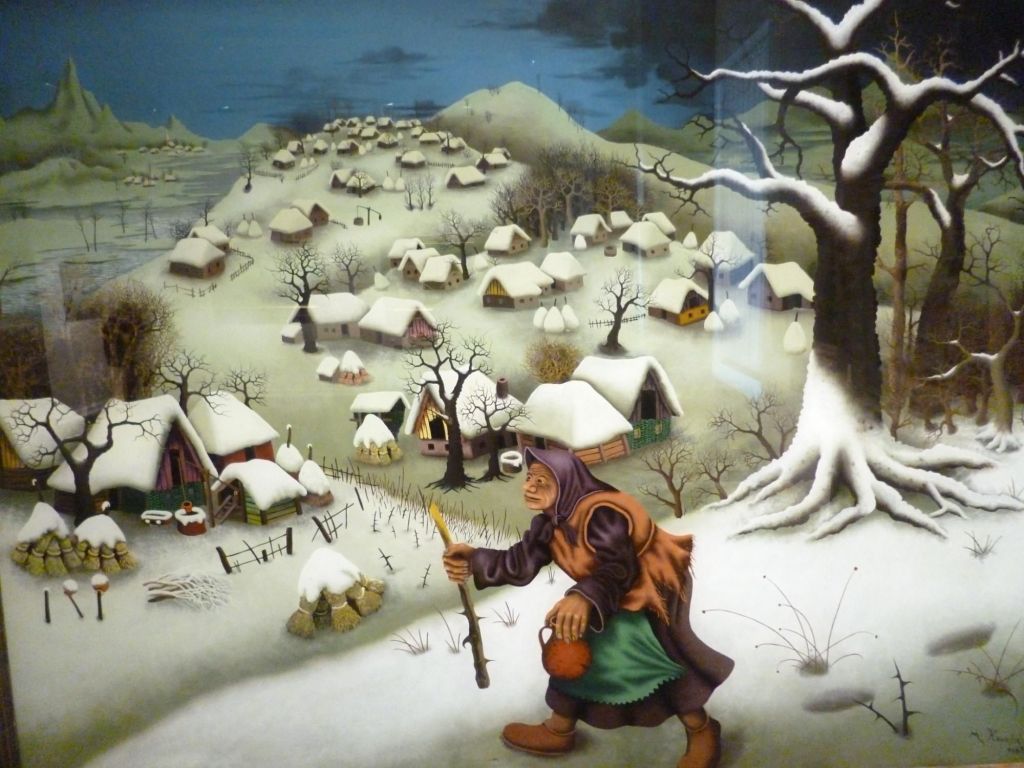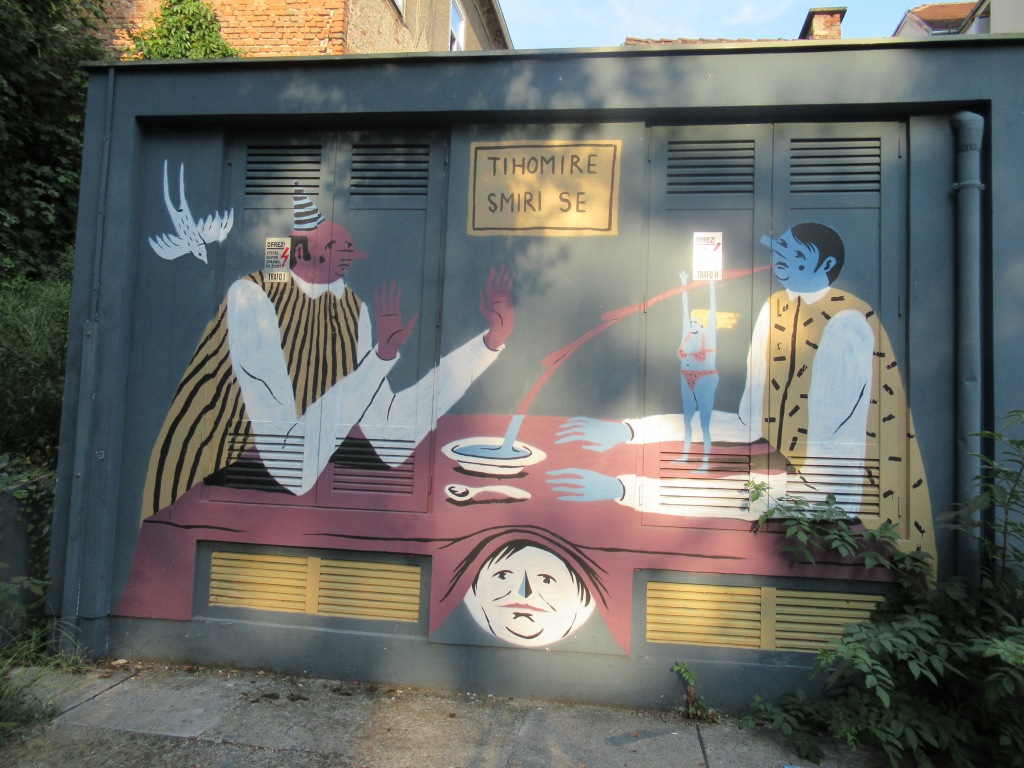We were advised not to visit Zagreb by the Croatian cousin of my friend, Sherri, when we were making our travel plans earlier this year. It would be too hot in August, he told us, and, besides, there’s not much to see there. He recommended Split and Dubrovnik, which are places we are also going. Someone else who knows the area well told us that Croatia has better things to offer in its Adriatic coast and national parks. We went to Zagreb anyway and, yes, it is hot in August, but we are used to heat from living in Baton Rouge and Atlanta.


Zagreb is, by far, the largest city in Croatia and is the capital. We didn’t need much more reason to visit – if we wanted to come away with some sense of what this country is about, it’s probably not a good idea to skip Zagreb. What we were unprepared for is the city’s sheer quirkiness. It is famous for a museum that is devoted to relationship breakups, has a long-standing tradition going back 140 years of firing a cannon from its tower every day at noon, takes pride in having one of the shortest funiculars in the world, and is the home of a hidden graffiti park that is also a children’s playground with an adjacent bomb shelter. You just can’t make this stuff up. It also has a small, but impressive museum of naive art, sometimes called folk art. Even its grand structures are surrounded by little oddities: its beautiful and ornate cathedral, which is the largest church in Croatia and tallest structure in Zagreb, created a stir several years ago when it purchased pre-owned chandeliers from a Las Vegas casino. Need I go on?



Museum of Broken Relationships
Who could pass up a museum with a name like this? I didn’t know quite what to expect, but the museum is devoted to all types of relationships, not just romantic ones, and all kinds of reasons for the breakups. Each entry has an artifact or keepsake and a description. Most of them fall under a handful of similar reasons, though, most are on themes of unavoidable separation (moving, going to war), infidelity, death, or just plain boredom. Some of the more interesting exhibits are focused on a sweater a woman angrily finished knitting for her unfaithful boyfriend, a woman who went around the world depositing film-canister portions of her dead husband’s ashes at various locations to fulfill his dying request, a wedding dress from a woman whose fiance was killed in a terrorist attack in Istanbul a week before their wedding (this was the saddest), and a woman who ‘broke up’ with pizza because she had developed a gluten intolerance. This wacky, sad, and funny museum now has a branch in Las Vegas.


On a more serious note, war in Croatia
Most of us who reached adulthood by the early 1990s remember hearing news reports about the war and ‘ethnic cleansing’ in this region of the Balkans, the former Yugoslavia. If the tensions in this part of the world are something you’ve never understood, you are not alone. The long-standing resentments are very complex — so complex, in fact, that I hesitate to comment on them. But part of the reason we are travelling is to experience and learn more about the world. With that in mind, we signed up for a tour in Zagreb called the “War Tour” that traces the tensions in Croatia starting shortly after WWI and progresses though the conclusion of the war in the 1990s. We have also been doing some additional reading to gain a deeper understanding.
One of the takeaways from the tour is that the long-standing tensions are based on resentments from times past and from differences in religion and ethnicity. This is pretty universal, looking at tensions around the world – this always seems to be the reason. The other is that, while Tito was a Communist dictator, the years he was in power were among the most productive and stable in the region’s history. The war in the early 1990s, ten years after Tito’s death, arose from a combination of unresolved conflicts going back to the World Wars, and poor leadership in the individual countries. These are not blinding insights, I realize.

But maybe the stories of this conflict were best summarized by a video interview with a nineteen-year-old man who had been conscripted in the army on the Serbian side. He was interviewed in the field. He didn’t understand the war he was fighting in. He knew that the ‘enemy’ wanted independence and he didn’t understand why they just couldn’t have it. He had seen three of his buddies die that day. The officers were never killed – he repeated that several times. He talked about his exhaustion and fear and his wish, above all, to get home safely. His anguish was truly heartbreaking. And his position represents that of so many of the young people who were forced to fight wars that they did not feel were theirs to fight.
The happy ending to the story is that, twenty-five years later, there is peace. Our tour guide, a thirty-year-old woman, told us that she has Serbian friends and they get along well, but they cannot discuss the war or past events. There are still emotions, still tension, still people who lost loved ones in the wars. But for now there is peace.

Another piece of succinct, entertaining writing. I like the woman in the winter landscape painting.
I needed you to help me pack for seasonal differences between Austin and Port Townsend, Wash. Clothes for 10 days with garden work in Austin upon return from Seattle. This is cheating in your book, but I’m packing for Austin and leaving Austin clothes at Emily’s. Taking only Port Townsend clothes to PT. Driving over and returning by car.
Did y’all throw your hands over your heads and scream as you came down on the little, slanty railroad?
“Americansky!”
On Tue, Sep 3, 2019 at 3:16 PM You and Me, Odyssey wrote:
> Sallie Williams posted: ” We were advised not to visit Zagreb by the > Croatian cousin of my friend, Sherri, when we were making our travel plans > earlier this year. It would be too hot in August, he told us, and, besides, > there’s not much to see there. He recommended Split and Dubr” >
LikeLike
Fascinating!
LikeLike
Thanks, Fiona!
LikeLike
I live in Kosovo since 6 monthsand still find difficult to understand the reasons that brought to this war.
I have tried to ask but none of the locals speak about it so we often change subject after a couple of minutes.
LikeLike
It must be such a difficult situation.
LikeLike
Yes, wars are always a very complicate matter
LikeLike
so true
LikeLike
I really enjoyed reading this! I’m heading to Zagreb tomorrow and reading your post has got me excited to visit. I was wondering if you had any tips or advice for visiting and which places I can’t miss?
LikeLike
Thank you, Vicky! We enjoyed both walking tours we took: the free city tour and the communist tour. Both very well done. The museum of broken relationships is not to be missed. It’s fairly small, but packs a lot. Same for the museum of naive art. Don’t miss Tkalca Street. We went there early in the morning before anyone got there and enjoyed seeing it. Enjoy!
LikeLiked by 1 person
Thank you for the tips! I’ll be blogging about my time there in a few days so keep an eye out for it.
LikeLike
will do!
LikeLiked by 1 person